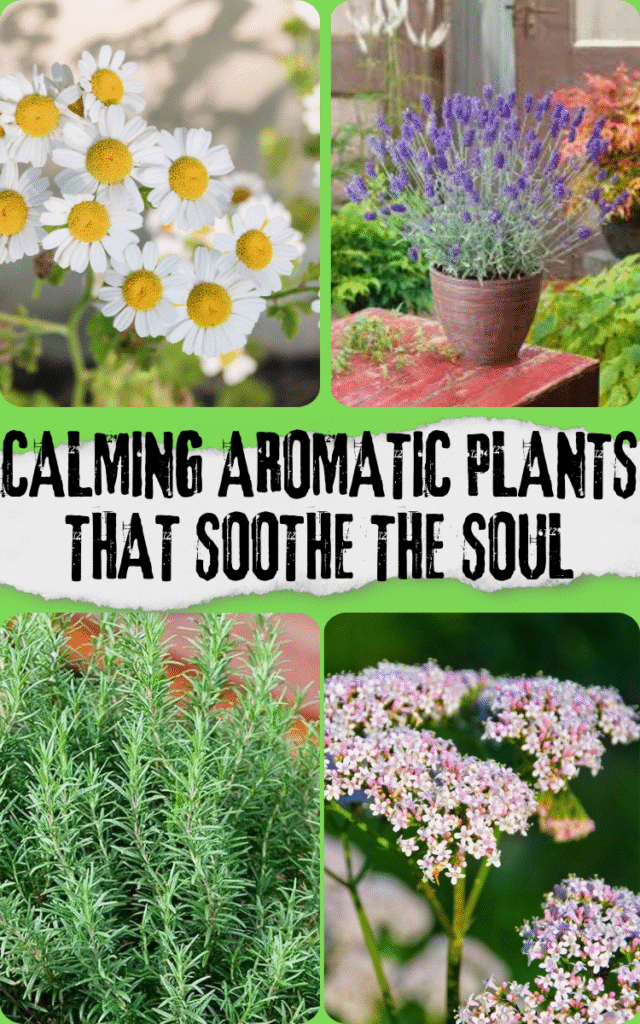
There are days when life feels like it’s moving too fast, and I find myself craving a little pocket of peace. One of the simplest ways I’ve discovered to shift the atmosphere around me is through plants. Not only do they bring life and beauty into a space, but some are also blessed with fragrances that instantly calm the mind and body. There’s just something magical about walking into a room and being greeted by a gentle, soothing aroma that feels like a soft exhale after a long day.
Aromatic plants have been part of human rituals for centuries, from ancient herbal baths to burning leaves during ceremonies. Their scents carry more than just fragrance—they influence emotions, sleep, and even the way we focus. Having them around feels like inviting a natural therapist into your home or garden, one that works quietly but powerfully.
In this article, I’ll walk you through fifteen aromatic plants that can help bring calm to your everyday life. Some are herbs you can grow in a pot on your windowsill, others are flowering plants that transform a garden corner, but all of them have one thing in common: they whisper peace into the air.
Why Aromatic Plants Help Calm the Mind
Scents are more powerful than we often realize. A single whiff of lavender can instantly remind you of a spa day, while the earthy aroma of rosemary may bring you back to a warm kitchen from childhood. This happens because scent has a direct connection to the brain’s limbic system, the part that controls emotions and memories. Unlike sound or sight, it doesn’t go through layers of processing—it hits the emotional core right away.
Because of this, aromatic plants are nature’s built-in therapy. Instead of artificial sprays or candles, they offer scents that are grounding and authentic. Each one has its own personality—some are floral and sweet, others sharp and refreshing—but all work toward the same goal of bringing balance to a restless mind.
I’ve found that incorporating them in simple ways, like sipping tea made from fresh herbs or keeping a small potted plant by the bed, makes a big difference. Their presence is subtle, but their impact can be surprisingly deep.
15 Aromatic Plants for Calm
1. Lavender

Lavender is often called the queen of calm, and for good reason. Its fragrance is soft, floral, and immediately soothing. People have used it for centuries to aid sleep, reduce anxiety, and even as a gentle perfume for linens. I like keeping a bunch of dried lavender near my bed—it feels like falling asleep in a meadow.
Growing lavender isn’t complicated, especially if you have a sunny spot in your home or garden. It thrives in well-drained soil and doesn’t need a lot of fussing over, which makes it a forgiving plant even for beginners. Indoors, it adds a touch of charm and, of course, that signature aroma.
Beyond just enjoying its scent, lavender is incredibly versatile. You can make sachets, brew tea, or even use its essential oil in a diffuser. It’s the kind of plant that proves beauty and usefulness can go hand in hand.
2. Chamomile
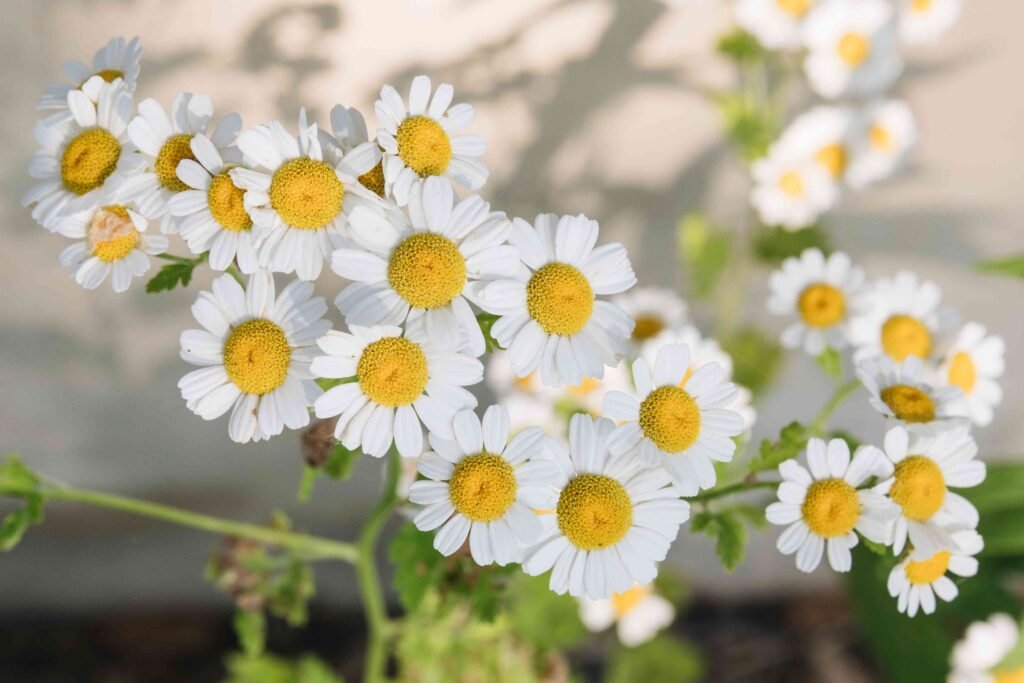
Chamomile’s gentle, apple-like fragrance is like a hug for the senses. Most people know it through tea, which has been a bedtime staple for generations. Its calming effect isn’t just folklore—science backs up its ability to ease stress and help with sleep.
This little daisy-like plant is surprisingly easy to grow. It does well in containers, making it perfect for a small balcony or windowsill. Watching its delicate flowers sway in the breeze is calming in itself, even before you brew them into tea.
I find chamomile especially grounding because it feels familiar. A warm cup at night is a ritual in many households, and having the plant itself around makes the whole experience more meaningful. It’s not just a drink—it’s a connection to the garden.
3. Jasmine

Jasmine’s fragrance is sweeter and more exotic than many other calming plants. It’s a scent that lingers, almost like a soft perfume in the air. This makes it perfect for evenings, when the blooms open and release their strongest aroma.
Growing jasmine can be a little more demanding, but the reward is worth it. It likes warmth, sun, and a little support to climb. If you’ve ever sat on a porch wrapped in the scent of jasmine during summer, you’ll know just how transformative it can feel.
Jasmine is also used in teas and essential oils, both of which carry its calming and uplifting properties. I often think of it as the plant that bridges relaxation with joy—it doesn’t just soothe, it also uplifts the spirit.
4. Rosemary

Rosemary has an earthy, pine-like scent that feels both calming and grounding. It’s often thought of as a kitchen herb, but its fragrance has a quiet strength that can ease tension and sharpen focus at the same time.
One of the best things about rosemary is how easy it is to grow. A pot by the kitchen window will not only provide fresh sprigs for cooking but will also fill the room with a refreshing, herbal aroma. It’s a plant that doesn’t ask for much but gives a lot back.
Beyond cooking, rosemary can be used in teas or even infused in oil for massages. I find its scent especially comforting during winter—it has that forest-like aroma that feels like a deep breath outdoors.
5. Lemon Balm
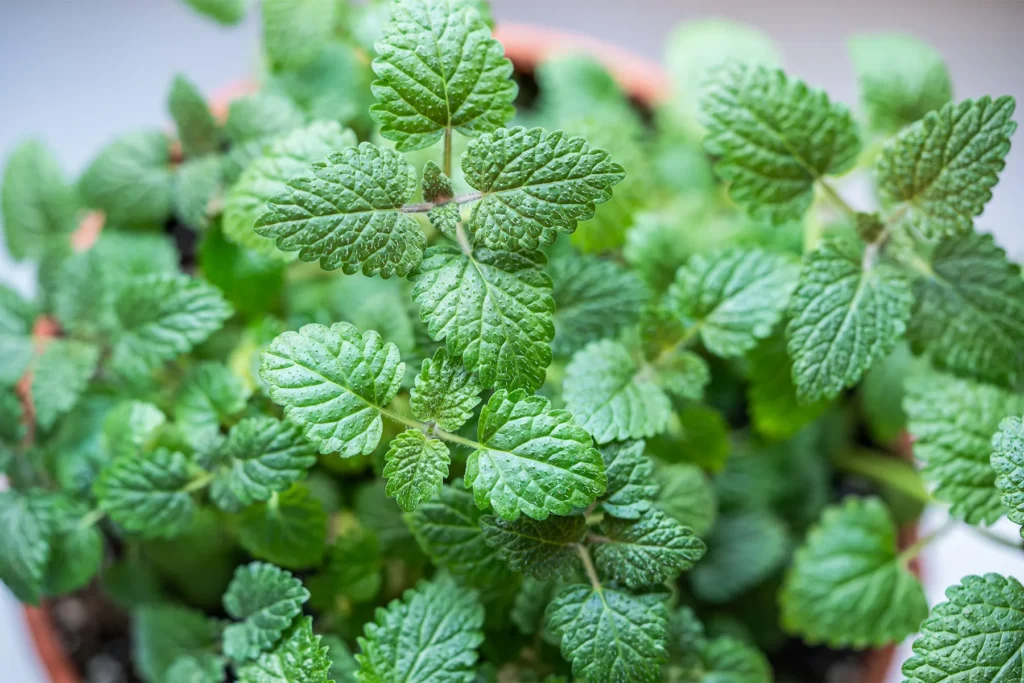
Lemon balm is a cousin of mint, but its fragrance is fresher, with a citrus twist. Just brushing against its leaves releases a scent that instantly brightens the mood. It’s one of those plants that feels cheerful and calming all at once.
It’s also incredibly easy to grow, even for beginners. In fact, sometimes it grows a little too well, spreading quickly in the garden. But that just means more leaves for tea, which is one of the best ways to enjoy its calming properties.
A cup of lemon balm tea before bed works wonders for stress and restlessness. I’ve also found that keeping a small pot on my work desk helps me stay calm through busy days—the scent alone feels like a reset button.
6. Peppermint

Peppermint is invigorating yet calming, which makes it a bit unique among aromatic plants. Its cool, sharp aroma helps relieve tension headaches and clears the mind, while also encouraging relaxation.
Like lemon balm, peppermint grows quickly and abundantly. A simple pot is often enough to keep you supplied with fresh leaves for tea, infused water, or even homemade remedies. Just rubbing the leaves between your fingers releases that refreshing scent.
I’ve found peppermint especially useful during stressful afternoons. A quick whiff of its leaves—or a cup of peppermint tea—feels like a small burst of energy that doesn’t overwhelm but instead calms the nerves.
7. Gardenia

Gardenias are known for their luxurious, creamy fragrance. It’s one of those scents that instantly makes a space feel elegant and serene. Having a blooming gardenia nearby is like having a natural air freshener that also soothes the senses.
They can be a little fussy when it comes to growing conditions—they like humidity and consistent care—but the effort is worth it when those blossoms appear. Indoors, they bring not just fragrance but also beauty with their glossy leaves and pure white flowers.
The scent of gardenia has been linked to better relaxation and even reduced anxiety. To me, it feels like a plant that creates its own little oasis, no matter where it’s placed.
8. Valerian
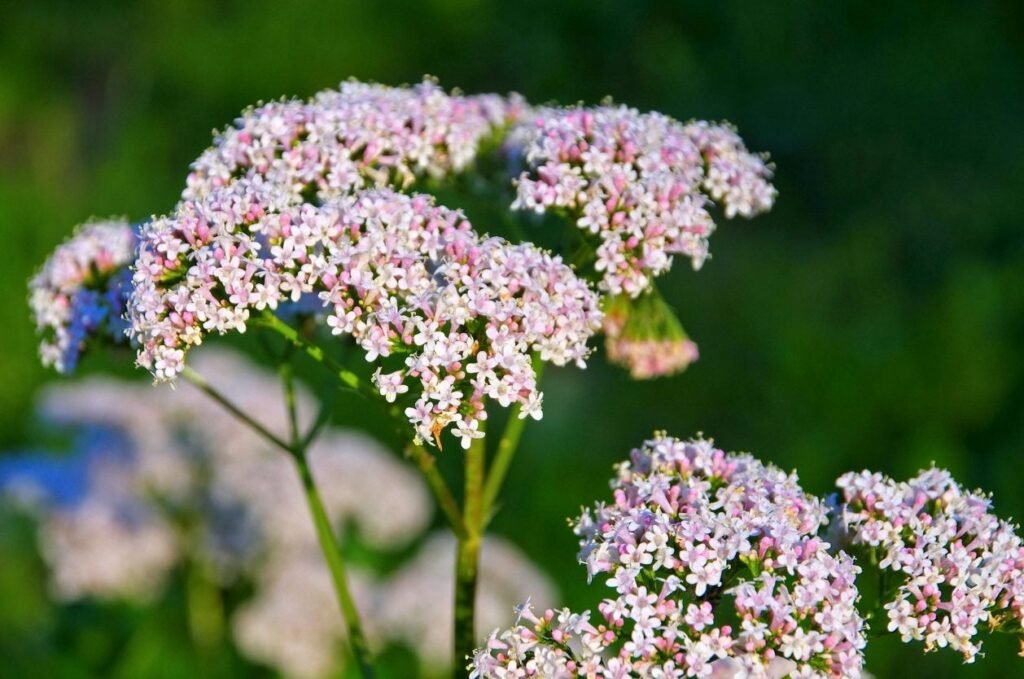
Valerian is often called “nature’s sleep aid,” and for good reason. Its root has been used in teas and tinctures for centuries to promote deep rest and calm nerves. While the flowers have a gentle, sweet fragrance, it’s the root that carries most of the calming power.
Growing valerian takes a bit of patience because it thrives best outdoors in a garden bed. The tall stalks and clusters of small white or pink flowers are beautiful in their own right, even if the root is what’s most prized. It needs rich soil and consistent watering, but it’s a hardy plant once established.
If you’ve ever struggled with restless nights, valerian is worth having nearby. I’ve sipped valerian tea a few times before bed, and the way it gently eases tension feels almost like being rocked to sleep.
9. Thyme
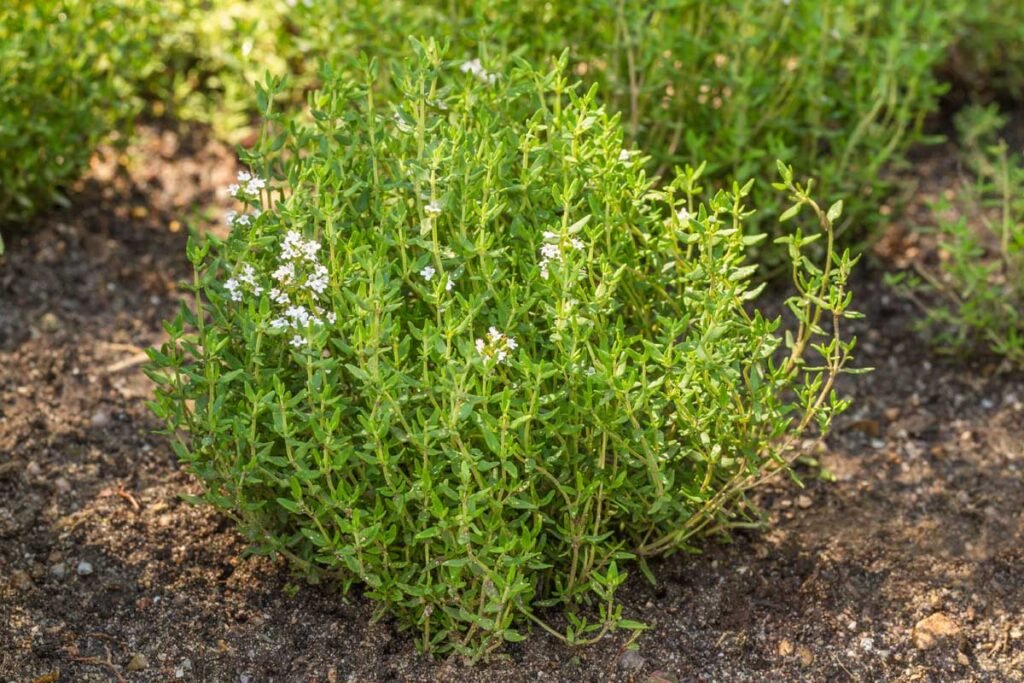
Thyme is an understated herb that carries a delicate, earthy fragrance. It’s not as bold as peppermint or as floral as jasmine, but its subtle aroma has a steadying effect. Breathing it in feels like finding focus in the middle of a busy day.
This little herb grows easily in pots and gardens alike. I like to keep it near the kitchen for both cooking and its fragrance. Just brushing the plant with your hand can release a burst of aroma that makes the air feel fresher and more grounded.
Thyme also works beautifully in teas, especially when blended with honey. Its scent and flavor encourage calm, making it a quiet but dependable plant to keep around.
10. Sage

Sage has a warm, earthy scent that many people associate with cleansing rituals. For centuries, it’s been used to clear spaces of negative energy, but it also works on a personal level to bring calm and grounding.
Growing sage is simple, and it thrives both indoors and outdoors. Its silvery-green leaves add texture to a garden, and when crushed, they release a fragrance that feels instantly soothing. I’ve even dried the leaves to make small bundles for burning, a practice that brings a sense of renewal to my space.
Aside from its spiritual uses, sage is also wonderful in cooking and teas. Its aroma is cozy and calming, making it a versatile plant for both the kitchen and the soul.
11. Eucalyptus

Eucalyptus is a refreshing plant with a crisp, menthol-like fragrance that clears the mind and eases tension. Just hanging a few sprigs in the shower can turn the whole experience into a spa-like retreat.
Though it’s a tree in its natural form, smaller varieties can be grown in pots. They like plenty of sun and space, but even a small plant can release enough aroma to change the feel of a room. Dried eucalyptus is also a favorite for bouquets and home décor, carrying its scent long after being cut.
I especially love using eucalyptus when I need to recharge. Its clean, invigorating scent cuts through stress and fatigue, leaving me feeling lighter and more refreshed.
12. Hops
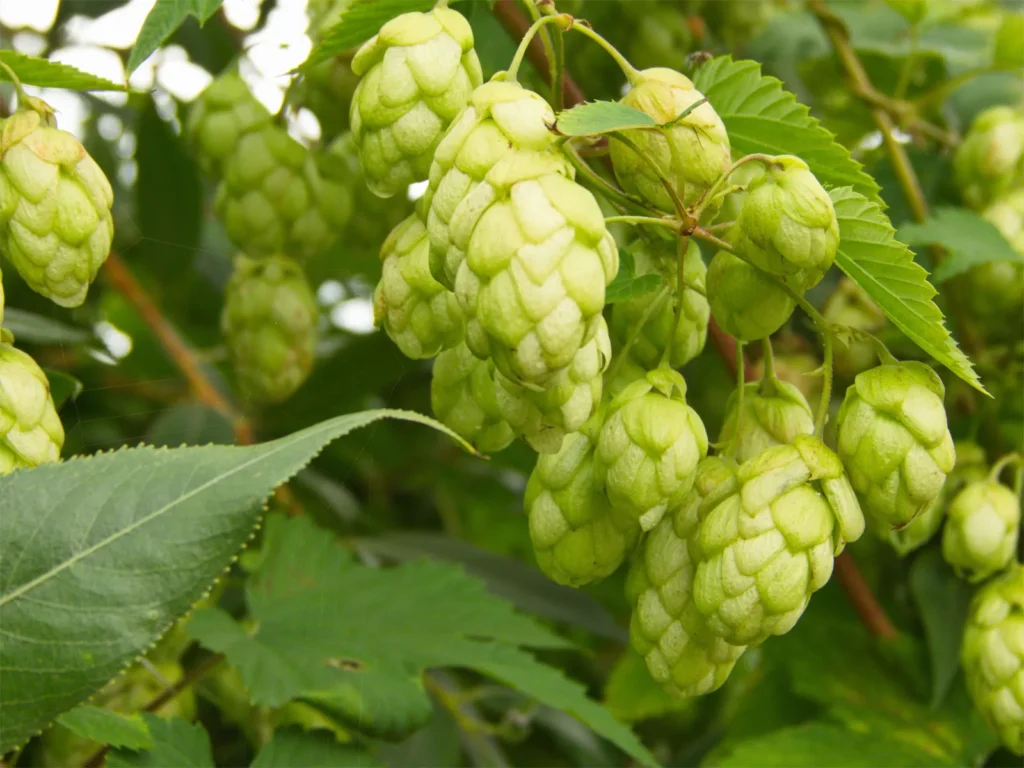
Most people know hops for their role in brewing beer, but they also carry a calming, herbal scent that has been used traditionally to aid sleep. In fact, hops were once tucked into pillows to help restless sleepers drift off.
Hops are climbing plants that thrive outdoors with a little support. They grow quickly, producing cone-shaped flowers that release their unique fragrance. While not the prettiest plant on this list, their calming power more than makes up for their modest looks.
Paired with lavender, hops make a natural sleep aid that feels both gentle and effective. I find their scent grounding—like an anchor that helps the body finally settle.
13. Geranium (Scented Varieties)
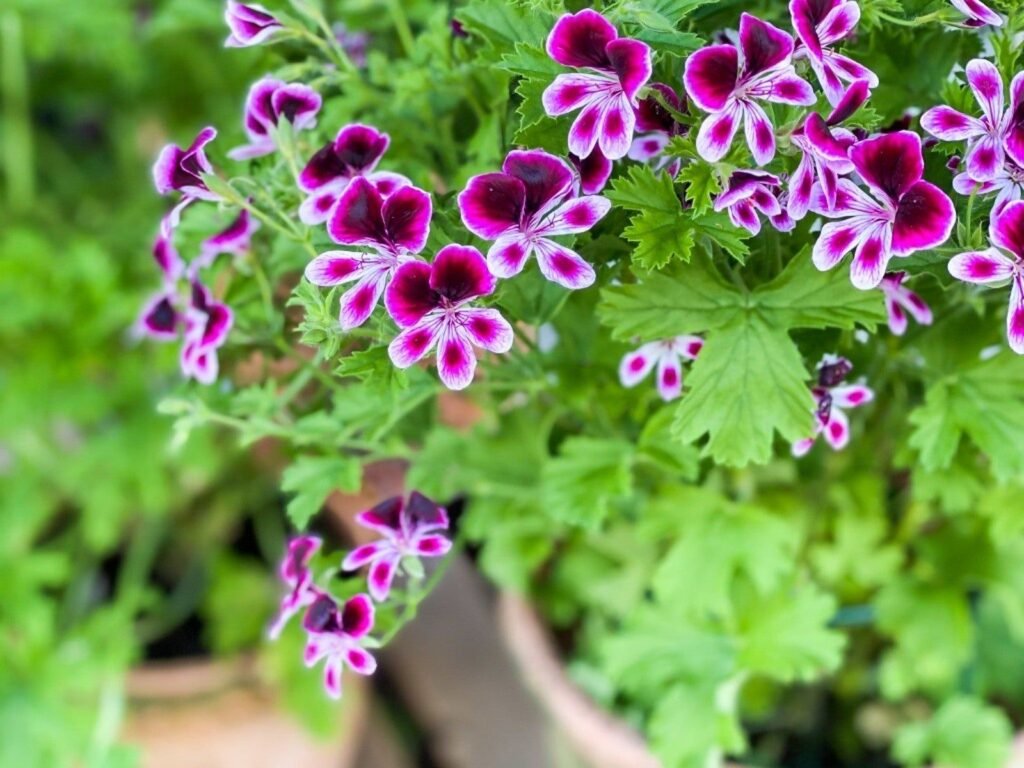
Scented geraniums are a delightful surprise in any garden. Unlike ordinary geraniums, these have leaves that release a fragrance when touched, often reminiscent of roses, lemons, or even mint. Their aroma is uplifting and calming, a cheerful presence on stressful days.
They grow well in pots, making them perfect for balconies, patios, or sunny windowsills. Plus, they’re low maintenance and reward you with both pretty blooms and aromatic foliage. Just running your hand along the leaves is enough to release their scent.
The essential oil of geranium is also popular in aromatherapy for reducing stress and balancing emotions. To me, scented geraniums feel like happy companions—plants that brighten both the air and the mood.
14. Marjoram
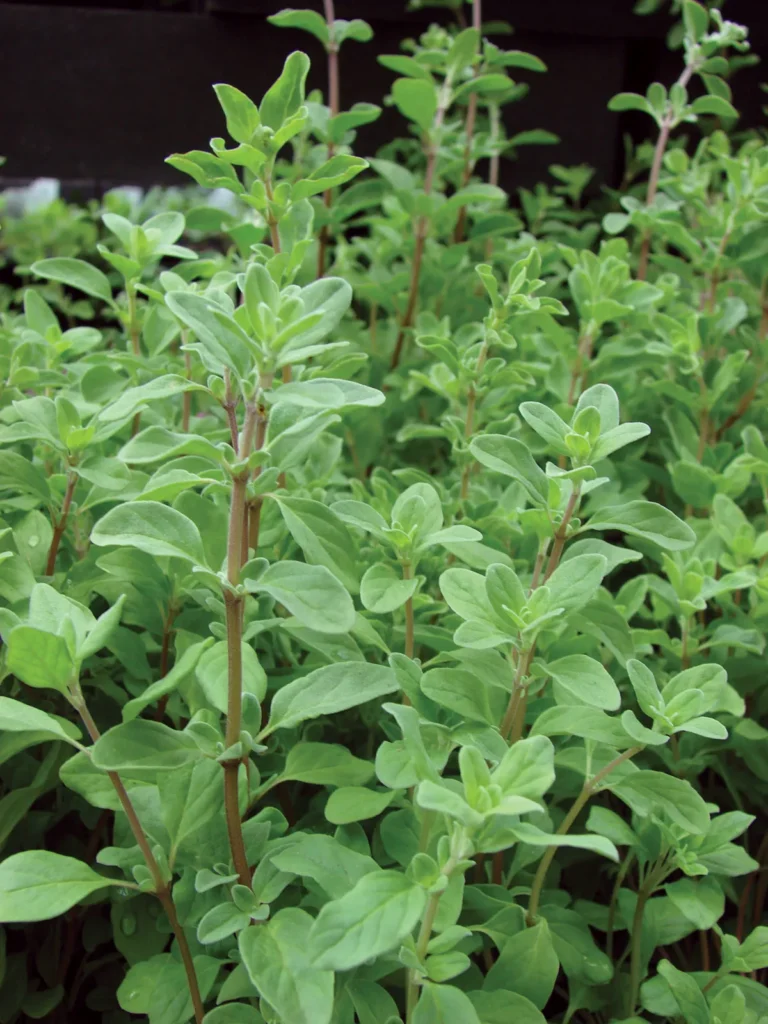
Marjoram is a close relative of oregano, but its fragrance is sweeter and softer. It’s often called the “herb of happiness,” and its calming, herbal scent lives up to that name. It’s wonderful for easing stress and encouraging relaxation.
It grows easily in gardens or pots, thriving in sunny spots with well-drained soil. Like many herbs, it can be used fresh or dried, and its fragrance lingers long after harvest. A small pot of marjoram in the kitchen is both useful and calming.
I particularly enjoy marjoram in teas. Its gentle flavor and aroma create a moment of calm at the end of a long day, almost like a warm hug in a cup.
15. Ylang-Ylang
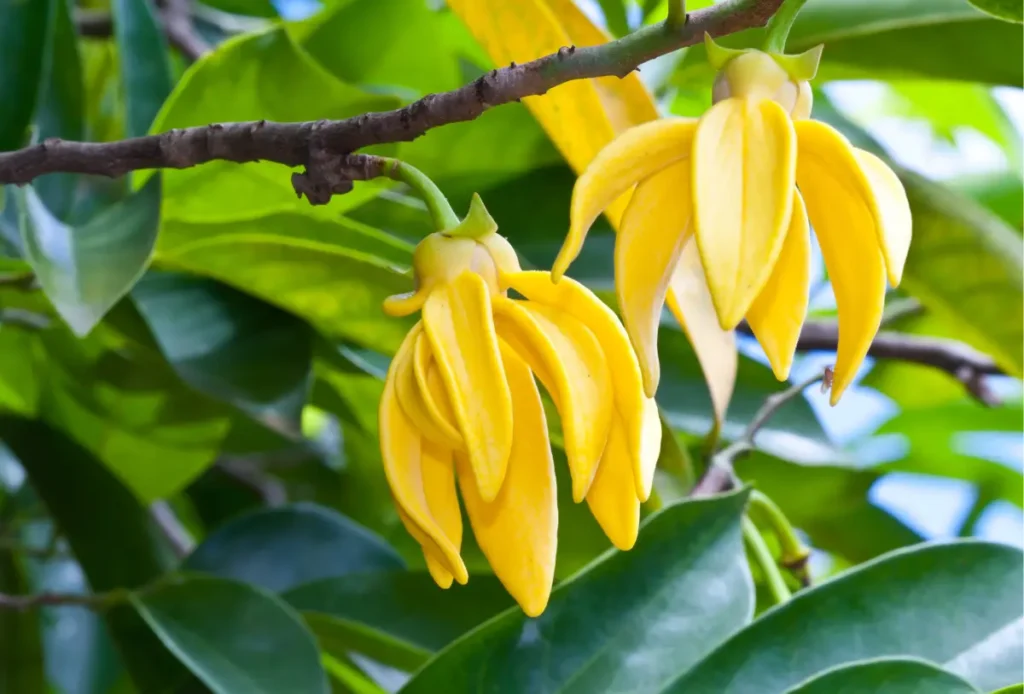
Ylang-ylang is an exotic plant with a fragrance that is both sweet and deeply calming. Its flowers are often used in perfumes, but they also carry strong stress-relieving properties in aromatherapy. The scent is said to lower heart rate and promote emotional balance.
The plant itself grows as a tropical tree, but its essence can be enjoyed through essential oils if growing it isn’t practical. Even a small vial of ylang-ylang oil can transform a space with just a few drops in a diffuser.
I love how ylang-ylang feels both grounding and uplifting. It’s the kind of scent that doesn’t just calm—it restores, making it one of the most powerful aromatic plants for creating peace.
How to Use Aromatic Plants for Calm
The beauty of these plants is that they can be enjoyed in so many ways. Fresh or dried leaves can be tucked into sachets and pillows, filling bedrooms with gentle fragrance. Teas are a classic choice, offering both the flavor and calming effects of the plants.
Essential oils and diffusers are another simple method. Just a few drops can fill a room with calm, and they’re easy to switch depending on the mood or need. Baths, too, are a wonderful way to soak in both the aroma and the benefits.
Even just keeping the plants nearby, alive and growing, makes a difference. A potted lavender on a desk or a sprig of eucalyptus hanging in the shower turns ordinary spaces into calming sanctuaries.
Tips for Growing Aromatic Plants at Home
Most of these plants can thrive in small spaces with just a little care. Containers are perfect if you don’t have a big garden, and many will grow happily indoors with enough sunlight. Herbs like rosemary, thyme, and mint are especially easy for beginners.
Watering is usually straightforward—most prefer soil that drains well and a consistent but not excessive schedule. For flowering varieties like jasmine and gardenia, humidity and sunlight are key. A sunny window or balcony often works wonders.
Harvesting leaves and flowers regularly not only keeps the plants healthy but also gives you a steady supply of calming scents. Drying herbs for later use is simple, and it ensures you have a touch of calm year-round.
Final Thoughts
Creating calm doesn’t always require big gestures—it can start with something as simple as a plant. Each of these fifteen aromatic treasures carries its own way of easing stress, lifting moods, and bringing balance. Together, they remind us that peace often grows quietly, leaf by leaf and bloom by bloom.
Start with just one or two that speak to you and see how they shape the rhythm of your day. Over time, you might find yourself surrounded by a small, fragrant sanctuary, where the air itself feels like a deep breath.
Calm, after all, is something we can cultivate—and nature, as always, is ready to help.

